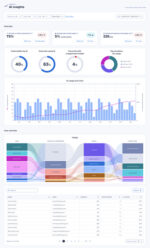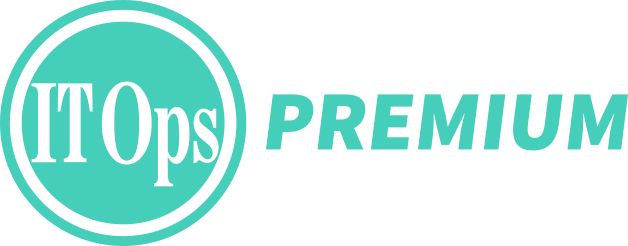
If you work in IT, you’ve probably spent more than a little time over the past few years pondering what the AI revolution might mean for your future job prospects – and thinking about how you can leverage AI to advance your career, rather than letting it take your job away. But without clear guidance on where AI is headed or how it will impact IT jobs, it can be tough to know exactly how to navigate the IT career landscape in the age of AI.
In the face of this challenge, IT employees would do well to look to the past for tips on how to respond successfully to technological disruption. No one can know precisely how AI will reshape IT roles, but we do know how similar innovations have affected IT workers in the past.
Case in point: The role of the system administrator, or SysAdmin. Long before modern AI appeared on the horizon, SysAdmins had to steer their way through earlier upheavals wrought by novel technologies that engendered new ways of working. IT workers aiming to thrive in the 2020s have much to learn from SysAdmins who successfully navigated industry changes a decade or two earlier.
A brief history of the SysAdmin role
As the term implies, a system administrator, or SysAdmin, is someone responsible for administering a computer system. Historically, SysAdmins were the people who set up physical computers and servers, installed applications, deployed updates and patches and so on. They were also the folks who monitored systems for performance or availability problems and fixed things when they broke. They did this work by running commands in a CLI environment, or by pointing-and-clicking their way through admin tools.
For many years – from circa 1980 to around 2010 – SysAdmins played a pivotal role in helping businesses to leverage digital technology successfully. But starting in the first decade of this millennium, several new technology trends converged to upend the SysAdmin role.
One was cloud computing, which diminished the importance of maintaining physical hardware – with the result that having SysAdmins on hand to do things like stand up on-premises servers and replace failing hard disks ceased to be vital for many organizations. Instead, SysAdmins morphed into cloud administrators.
Another was the advent of modern automation technologies, like Infrastructure-as-Code (IaC) platforms, which helped to scale the process of managing large collections of systems. In the age of IaC, SysAdmins who once looked after just a dozen servers were expected to manage hundreds.
And then there was the DevOps trend, which blurred the lines between software development and IT operations at many organizations, pushing SysAdmins to play a more hands-on role in developing and deploying software – as opposed simply to managing applications post-deployment.
The end of the SysAdmin era
Collectively, these disruptions transformed traditional SysAdmin roles in fundamental ways. Many companies stopped hiring SysAdmins at all, replacing them with roles like DevOps engineer, IT automation engineer and cloud administrator. Others maintained SysAdmin job titles, but they expected employees in those roles to do very different sorts of things – and to be able to do them much more efficiently and scalably – than they traditionally had.
For some SysAdmins, these changes spelled the end of their careers. Those who didn’t learn to use new automation technologies, for example, or to collaborate effectively with software engineers as part of DevOps initiatives, lost their competitive edge in the job market.
But for other SysAdmins, technological disruption had positive outcomes. Those who acquired some coding skills, and who could take full advantage of IaC, were able to automate the tedious parts of their jobs while increasing the value they brought to their employers.
Lessons for IT workers in the age of AI
The disruptive technology looming over IT jobs today, of course, is AI, not the cloud or IaC. But the takeaways for modern IT workers are much the same as those for the SysAdmins of the past.
The biggest lesson is that IT professionals who thrive in the age of AI will be those who succeed in leaning into the new technology. They must embrace it as a sort of sidekick that can bring new levels of scalability and efficiency to their jobs.
When IT workers approach AI from this perspective, they place themselves in a position to maximize the impact of their jobs. They also demonstrate the ongoing importance of their roles – and the fact that, rather than attempting to replace them with AI, employers can achieve better outcomes by pairing IT roles with AI technology.
What the “NoOps” tells us about AI’s impact on IT
On this point, it’s perhaps worth revisiting the famous 2011 prediction by a Forrester analyst that businesses were on their way to achieving “NoOps” – a world where, “by using cloud infrastructure-as-a-service and platform-as-a-service” technology, companies could automate IT operations so fully that they wouldn’t need traditional IT operations staff anymore at all.
That never happened, of course. IT operations staff had to adapt by embracing new technology, but they certainly did not go away. And in retrospect, the idea that automations would eliminate IT operations roles sounds kind of silly.
A similar trend is playing out before us today in response to AI, which presents a host of new opportunities to IT workers. Those who don’t embrace those opportunities by deploying AI sidekicks are indeed likely to fall behind, just like SysAdmins who ignored the cloud or didn’t bother to learn how to script. But IT pros who learn to leverage AI technology successfully can look forward to a brighter, more dynamic future – one in which AI, far from eliminating their jobs, makes their roles more impactful than ever.







